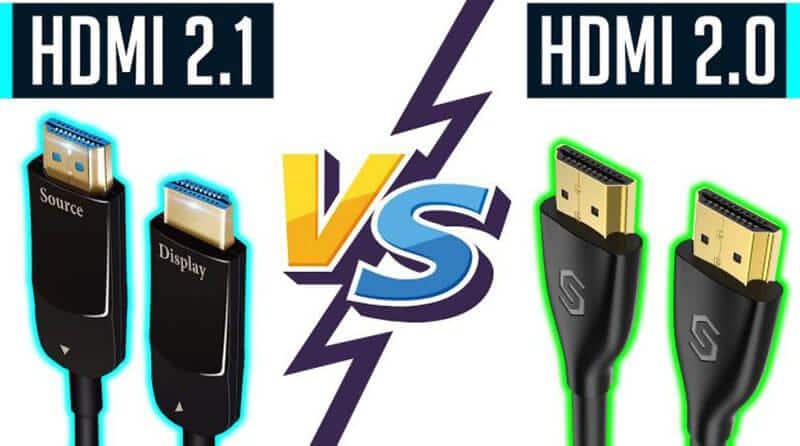HDMI input has become ordinary behind television and other home entertainment devices since the release of technology in 2002. Unlike most other categories of consumer electronics, however, television and home entertainment devices do not see large upgrades every year or even every two years. Even more, when upgrades can occur, new features take several months – in many cases, years – to be widely embraced in the industry and by users. One upgrade is HDMI 2.1 standards that, even though it has been around since 2017, it has not fully replaced its predecessor in terms of relevance or general acceptance Which might change. Fortunately, HDMI 2.1 is compatible with HDMI 2.0 cables and devices, such as slashgear previously recorded. However, if you tend to overhaul the console of your home game or entertainment setup, it is very valuable weighty benefits that HDMI 2.1 offers more HDMI 2.0.
The difference between HDMI 2.1 and HDMI 2.0
Latest HDMI 2.1 Standard leap ahead of HDMI 2.0. The first big difference that comes to mind is support for higher video resolution. HDMI 2.1 can support video transmission to 4K video throughput 120 frames per second (fps) or 8k at 60fps – as opposed to HDMI 2.0 which can only be used for 4K at 60fps or 8k at 30fps. By doubling the supported frame rate, HDMI 2.1 opens support for more dynamic video content, especially the game.
Two popular game consoles – Xbox X Series and Playstation 5 – Support HDMI 2.1 with frame rates up to 120fps in the game. In addition to higher frame rates, HDMI.org notes that HDMI 2.1 standards also ensure that faster-refreshing content is optimized for the best visual experience. This is made possible by additional support for the Variable Refresh Rate (VRR), which can dynamically change the refresh rate of the screen and synchronize with the frame rate of content to ensure the smooth transition from one frame to another and eliminate visual or jitter damage between the frame.
HDMI 2.1: Faster data speeds and better audio
In theory, HDMI 2.1 is also capable of up to 10K video resolution at 120fps, such as CNET has shown. But there are almost any current devices that can be tested to verify this claim. Support for higher resolution on HDMI 2.1 and twice the maximum number of frames supported by the previous standard also demands faster data transfer via cable.
HDMI 2.1 meets the requirements that the maximum upping supported by bandwidth of 18 gigabits per second (Gbps) to 48Gbps. HDMI.org Note that the TLDR is that a faster data transmission also means HDMI 2.1 also supports dynamic HDR, which allows HDR metadata must be adjusted to each frame instead of static HDR settings for entire video content.
HDMI 2.1 also supports HDMI cable power that can allow active HDMI cables to be supported directly by the source of output. The active HDMI cable used to send further distance data to ensure the signal does not suffer amplitude losses. Therefore, the active HDMI cable requires additional resources when used in HDMI 2.0 networks.
What you need to upgrade to HDMI 2.1
As mentioned above, HDMI 2.1 is compatible with HDMI 2.0, and that means you can continue to use your older device with a new TV – or vice versa. Shape and size of HDMI 2.1 connectors, and ports, are the same as HDMI 2.0, so you will not be needed to buy a new cable unless you really want to benefit from additional features that HDMI 2.1 offers So the remnants of the question, do you really need HDMI 2.1? The answer is tight depending on your use because the number of devices that use new standards is quite small. At present, the only significant impact is in terms of

